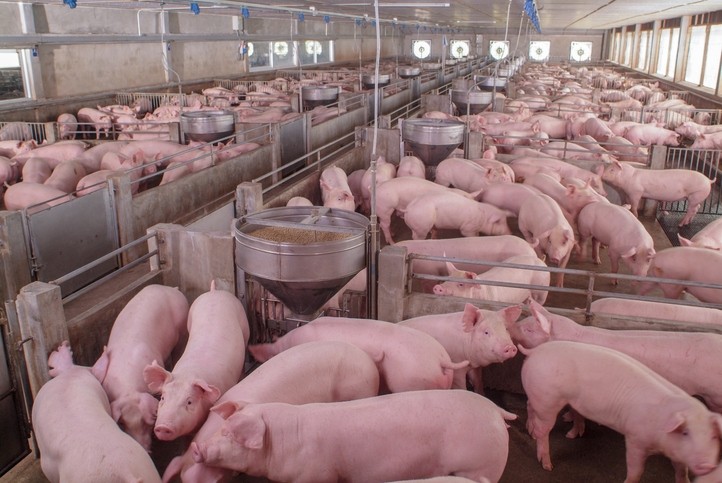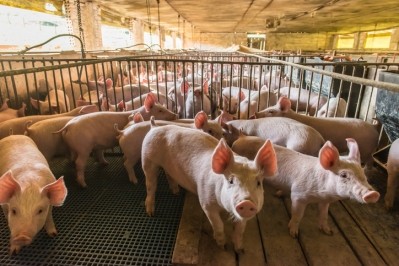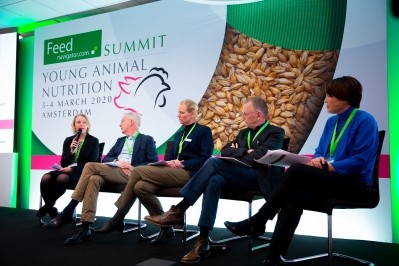Study: Zinc hydroxychloride minerals can improve performance when fed to pigs at zinc levels below EU regulations

Trouw Nutrition collaborated with the Universitat Autonòma de Barcelona on the research, which was published in in the Journal of Animal Physiology and Animal Nutrition.
In-vivo pig study methodology
A total of 444 pigs were allotted to 36 pens. Three‐phase diets were formulated to meet or exceed nutrient requirements (NRC 2012) the pre‐grower phase from day 1 to 21, the grower phase from day 21 to 84 and the finisher phase from day 84 to 105.
Four experimental diets were prepared with two Zn and Cu sources (sulphate and hydroxychloride) and two Zn supplementation levels (low: 20 mg/kg, and nutritional: 80 mg/kg). The supplementation level of Cu was fixed at 15 mg/kg for all diets.
To achieve these supplemental levels, the total amount of Zn sulphate monohydrate added was 228.6 g/ton in the nutritional diet, and 57.1 g/ton in the low diet. The supplementary rate of Cu sulphate pentahydrate was 60.0 g/ton for both sulphate diets. The supplementary amount of hydroxychloride Zn was 145.5 g/ton in the nutritional diet and 36.7 g/ton in the low diet. The supplemental rate of Cu in both hydroxychloride diets was 27.8 g/ton. Phytase was added at 500 FTU per kg of complete feed.
The team also saw that feeding grower‐finisher pigs with Zn levels below those established by the EU regulation did not affect growth performance and carcass characteristics.
They observed that the supplementation of pig diets with hydroxychloride minerals, which were from Trouw Nutrition’s IntelliBond range, resulted in higher apparent digestibility of Zn and Cu and enhanced carcass yield compared with diets supplemented with sulphate mineral counterparts.
The researchers also noted that while the pigs fed sulphate minerals showed improved performance during the grower period, the pigs fed the hydroxychloride trace minerals had the better performance during the finishing period and a greater carcass yield and mineral digestibility compared to pigs getting sulphate minerals.
“Hydroxychloride trace minerals are having an effect in the last phase, promoting improved performance just before slaughter, at the end of the finishing phase, which is in line with our previous results,” Dr Sandra van Kuijk, researcher, Trouw Nutrition, told us.
While more research needs to be conducted, one proposed mechanism of action of hydroxychloride minerals, the reason why there is an impact in the phase just before slaughter, is the ratio of protein to fat deposition, occurring late in the growth curve of the pig, she explained.
The structure of the two types of trace minerals being compared in this study is also a factor in how they performed.
Sulphate mineral sources are the most used mineral sources in the animal feed industry due to their relatively low cost. However, their higher solubility and reactivity can negatively impact feed cost and animal response, said Dr van Kuijk. The bonds are actually more stable in hydroxychloride trace mineral sources, she said, and their crystalline structure enables a slower release throughout the intestinal tract.
Next steps
Considering the pigs in this trial were receiving Zn levels on the edge of nutritional requirements, Dr van Kuijk said that she would have expected there to be greater impact on growth performance. “So, in the end, I wonder if we are feeding too much zinc in practice.”
She stressed, though, that the trial was done in controlled conditions and that, in more challenging production environments, the results might not be the same.
Further studies with complementary physiological biomarkers are necessary to confirm that these low dietary levels match the pigs’ metabolic requirements, she added.
Value of trace mineral market
Dr Davi Brito De Araujo, trace minerals global program manager, Trouw Nutrition, told us the global revenue for the IntelliBond range of trace minerals is about US$185m, while the total trace mineral market worldwide is valued at about US$2.5bn – the EMEA region represents about 32 to 33% of this market.
The value of the specialized trace minerals market is US$800m, including IntelliBond and organic sources.
Inorganic trace minerals are growing at the rate of 2% and organic versions at between 6 to 8%, noted Dr Brito De Araujo.
“Today, IntelliBond represents around 7.5% of the total trace mineral market or 23% of the total specialized trace mineral market - as such [we are seeing] growth of 15%. In the EMEA region, growth in 2020 [was pegged] at 20% for the company’s IntelliBond range, even given the challenges of COVID-19,” he reported.
Source: Journal of Animal Physiology and Animal Nutrition
DOI: https://doi.org/10.1111/jpn.13447
Title: Effects of two zinc supplementation levels and two zinc and copper sources with different solubility characteristics on the growth performance, carcass characteristics and digestibility of growing‐finishing pigs
Authors: S. Villagómez‐Estrada, J. Francisco Pérez, S. van Kuijk, D. Melo‐Durán, R. Karimirad, D. Solà‐Oriol














